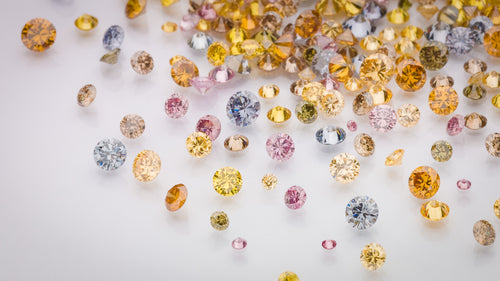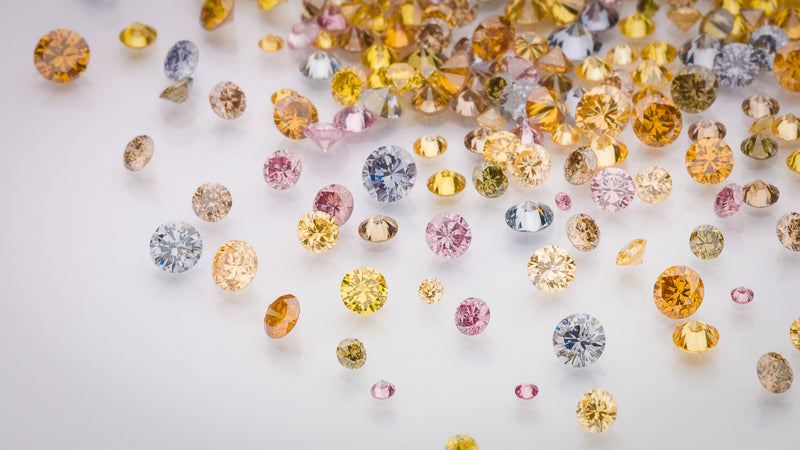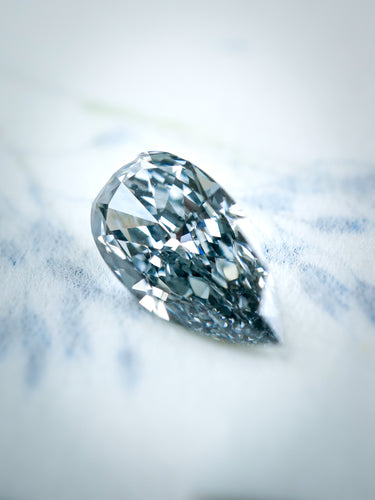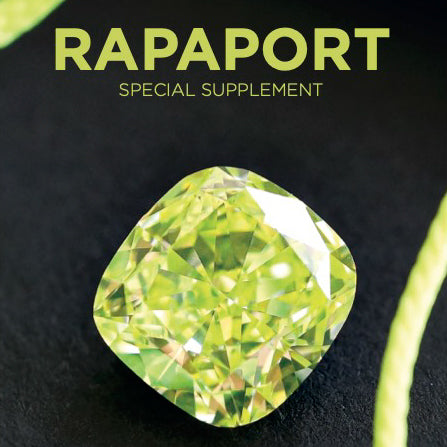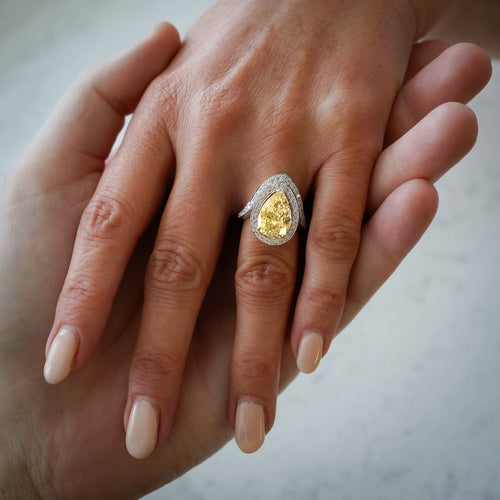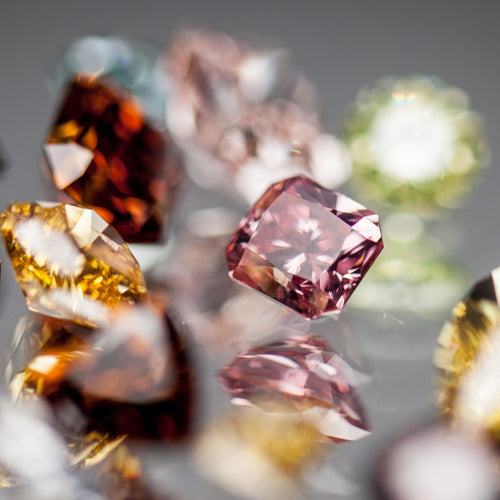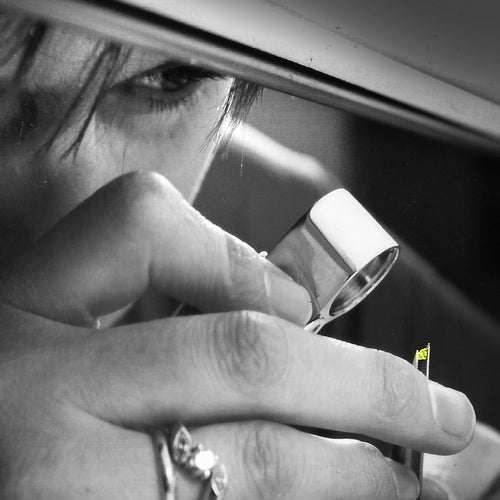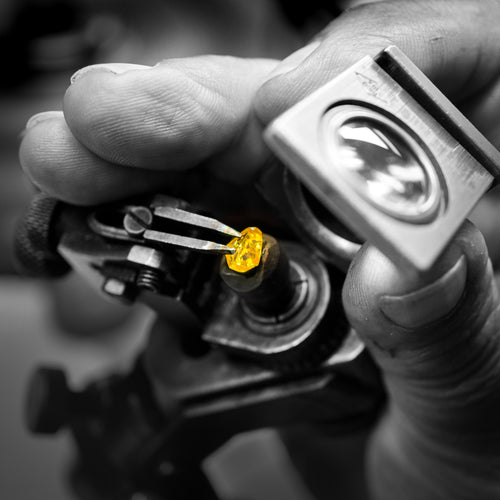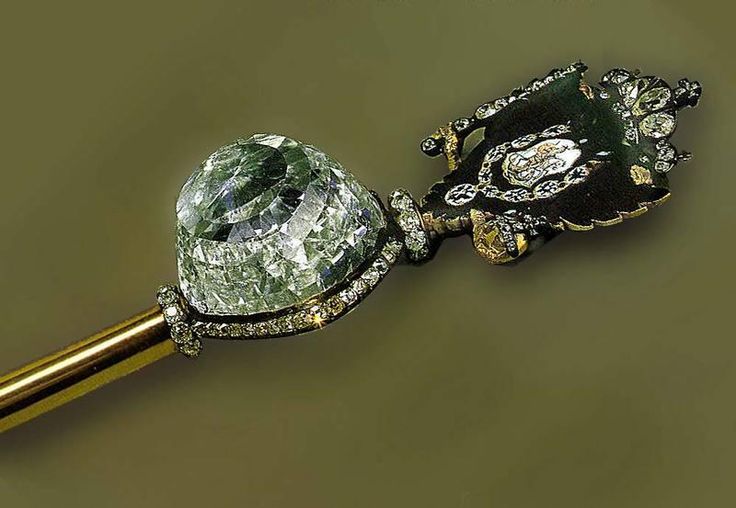
The Orlov diamond is exhibited in the Kremlin, in Moscow, and is part of the USSR Diamond Fund's treasury. The majority of the Fund's jewels were assembled well before the revolution of October 1917 and the collection also includes many important stones discovered between 1960 and 1990.
The Orlov owes its name to Count Alexis Orlov, lover of Catherine II and primarily responsible for the murder of her husband Peter III in July 1762.The stone was set in the imperial scepter on order of the Empress, who reigned 34 years. It weighs 189.6 carats and has the characteristics of the finest Indian diamonds. Its color is slightly bluish-green and it has been cut in the form of a pigeon egg. Its general shape, and the presence of a specific inclusion, point to the idea that the Orlov actually comes from a legendary stone which disappeared long ago: the Great Mogul, described by Jean-Baptiste Tavernier in his book, which is sometimes considered as the Leviathan on diamonds of Indian origin.

It was long thought that the Great Mogul had been re-cut into "smaller" stones, three of which are often mentioned: the Darya-i Nur, the Koh-i-noor and the Orlov. However, studies conducted in the 1960s by Canadian researchers on the Iranian crown's jewels confirmed that the Darya-i Nur bears no resemblance to the Great Mogul. The Koh-i-noor on the other hand is very close to it, but may predate the Great Mogul. The Orlov is the best candidate: a comparison of the pictures of the Russian diamond and drawings by Tavernier show two striking similarities. Add to this the fact that the Great Mogol's story doesn't seem to have an end, whereas the Orlov's story rather lacks a beginning…
